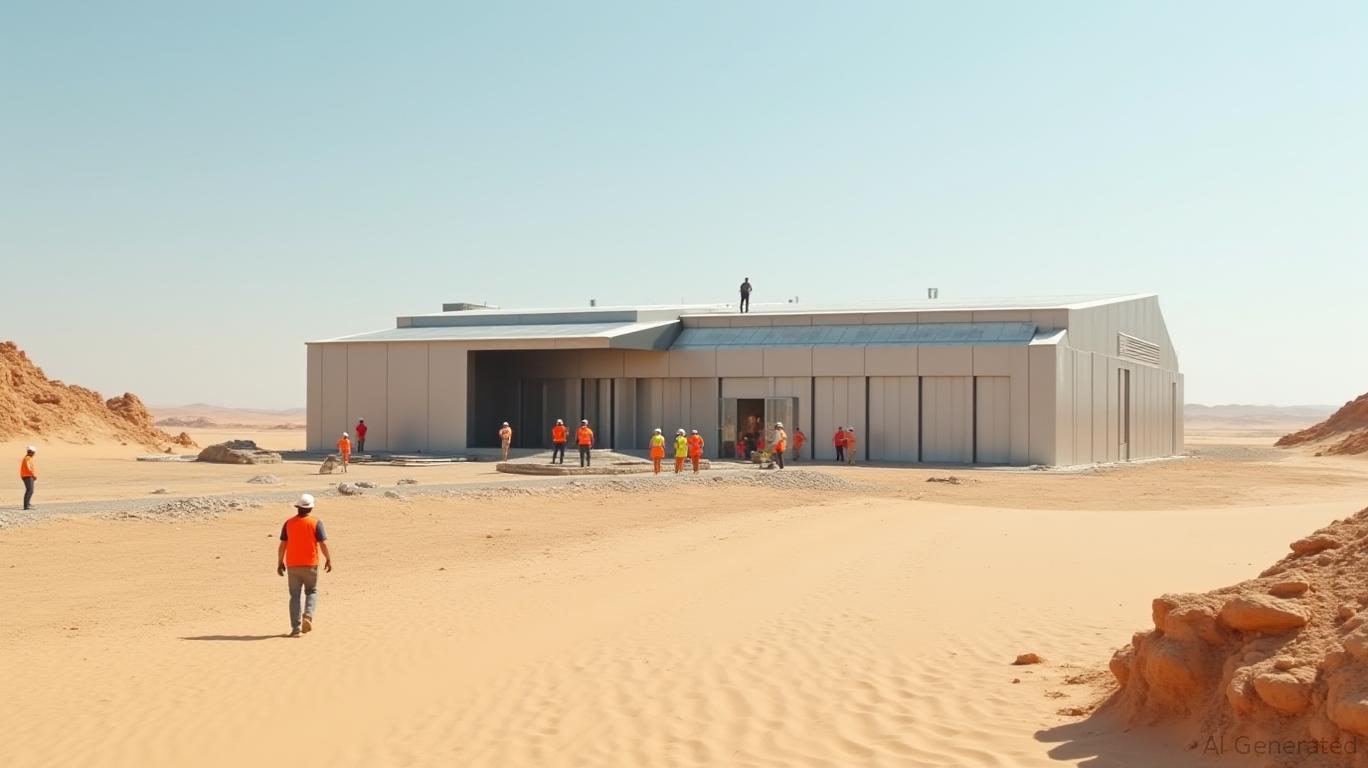Tech Infrastructure at Risk: Geopolitical Tensions and the Case for Cybersecurity Resilience
The recent fire near Microsoft's data center in Beer Sheva, Israel, has reignited concerns about the vulnerability of critical tech infrastructure to geopolitical instability. While the incident's direct cause remains unconfirmed, its proximity to Iranian missile strikes and the broader Iran-Israel conflict underscores a pressing reality: tech giants and their physical assets are increasingly exposed to the crossfire of global tensions. This article explores the implications of such risks and identifies investment opportunities in cybersecurity and data center hardening solutions to mitigate them.
The Beer Sheva Incident: A Wake-Up Call
On June 19, 2025, a fire erupted near Microsoft's campus in Beer Sheva, a city frequently targeted by Iranian missile strikes during the ongoing conflict. While Israeli authorities attributed the blaze to an intercepted missile, the incident highlights the fragility of centralized data infrastructure in high-risk regions.

The attack damaged the nearby Soroka Medical Center and disrupted local tech operations, illustrating how collateral damage from geopolitical clashes can cripple vital services. For
, which relies on global data centers for cloud services, such vulnerabilities threaten operational continuity and customer trust.Geopolitical Risks and Tech Infrastructure: A Growing Nexus
The Middle East is not the only hot zone. From Ukraine to Taiwan, tech infrastructure is increasingly collateral in hybrid warfare. Cyberattacks, physical sabotage, and supply chain disruptions are now routine tactics for state and non-state actors. For firms like Microsoft, Google, or Amazon Web Services (AWS), whose data centers power everything from AI to healthcare systems, the stakes are existential.
The Case for Cybersecurity and Data Center Resilience
The Beer Sheva fire underscores three critical imperatives for tech companies and investors:
Cybersecurity Leadership:
Companies specializing in AI-driven threat detection, endpoint protection, and network hardening are poised to thrive. CrowdStrike (CRWD), ranked #1 in professional quality for end-user security, and SentinelOne (S) exemplify this trend. Their AI platforms can preempt attacks targeting physical infrastructure, reducing reliance on reactive measures.Geographic Diversification:
Centralized data centers are sitting ducks. Firms like Cloudflare (NET) and Akamai (AKAM) are leaders in distributing infrastructure across regions, shielding against localized conflicts. Their edge computing and content delivery networks (CDNs) ensure redundancy even if one region is compromised.Hardening Physical Assets:
Data center operators must invest in physical security, from missile-resistant designs to redundant power systems. Cisco Systems (CSCO) and Fortinet (FTNT) offer integrated solutions that combine cybersecurity with physical infrastructure safeguards, a must for sites in conflict zones.
Investment Recommendations
- Top Cybersecurity Plays:
- CrowdStrike (CRWD): Dominates AI-driven endpoint protection, critical for deterring hybrid threats.
- Palo Alto Networks (PANW): Excels in network security and zero-trust architectures.
CyberArk (CYBR): Specializes in privileged access management, a key vulnerability in data centers.
Data Center Diversification:
- Cloudflare (NET): Its global CDN and edge computing reduce single-point failure risks.
Digital Realty (DLR): A REIT with a diversified portfolio of data centers in low-risk regions.
Government-Backed Solutions:
- Honeywell (HON): Partners with governments on secure infrastructure, including defense-grade facilities.
- Booz Allen Hamilton (BAH): Advises on geopolitical risk mitigation for tech assets.
The Bottom Line: Prepare for the Next Wave of Geopolitical Tech Risks
The Beer Sheva fire is a harbinger. As conflicts spill into the digital realm, investors should prioritize firms that harden infrastructure and diversify risk. The cybersecurity sector, already projected to grow to $400 billion by 2027, will see accelerated demand for solutions that blend AI, physical security, and geographic resilience.
For tech giants, the path forward is clear: invest in hardened data centers, partner with cybersecurity leaders, and spread assets across regions. For investors, this is a rare opportunity to profit from solving one of the 21st century's most pressing challenges. The next geopolitical crisis won't wait—neither should you.
This article synthesizes geopolitical risk analysis with actionable investment insights, leveraging recent events and market trends to highlight opportunities in cybersecurity and infrastructure resilience.

Comments
No comments yet